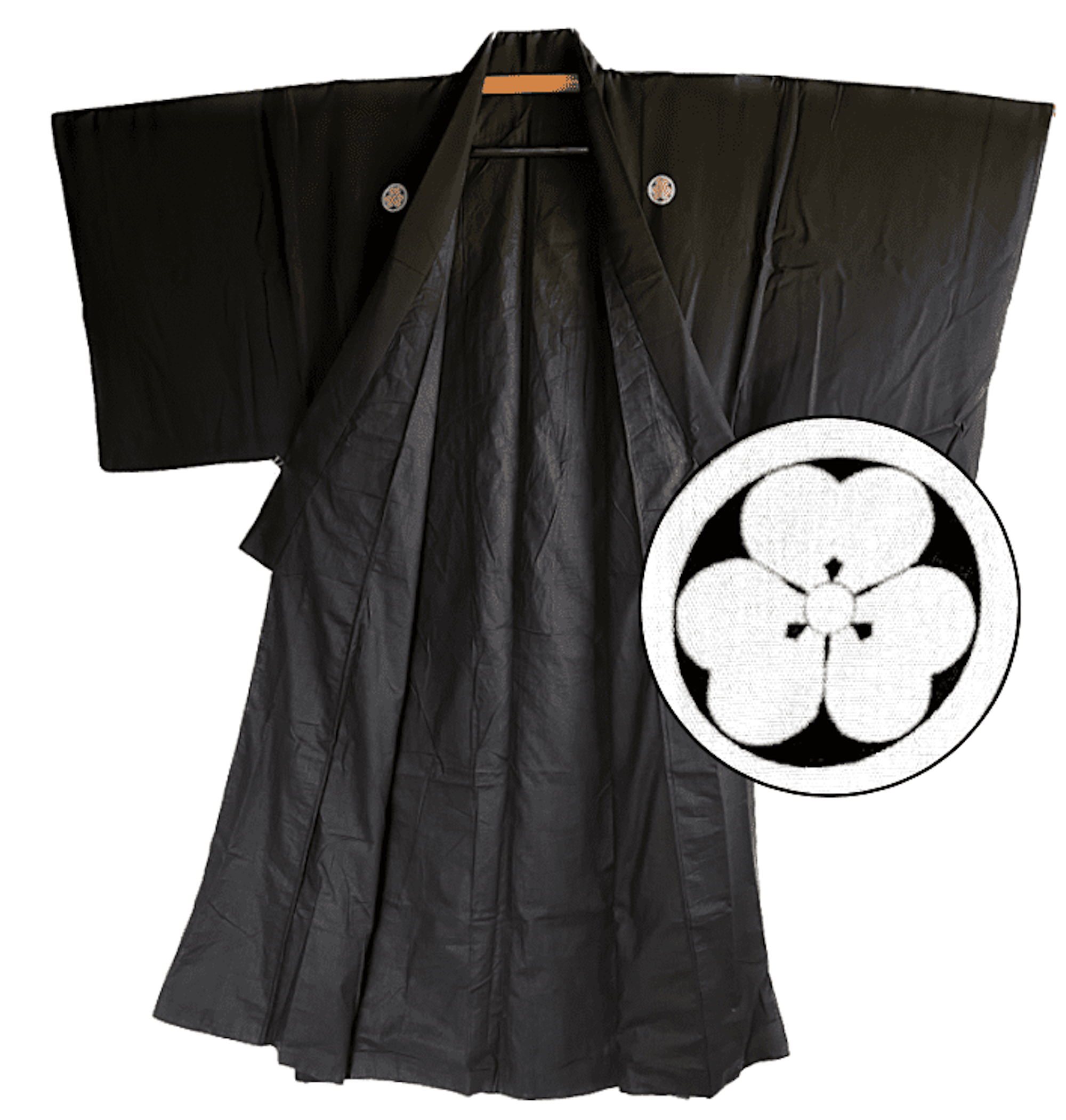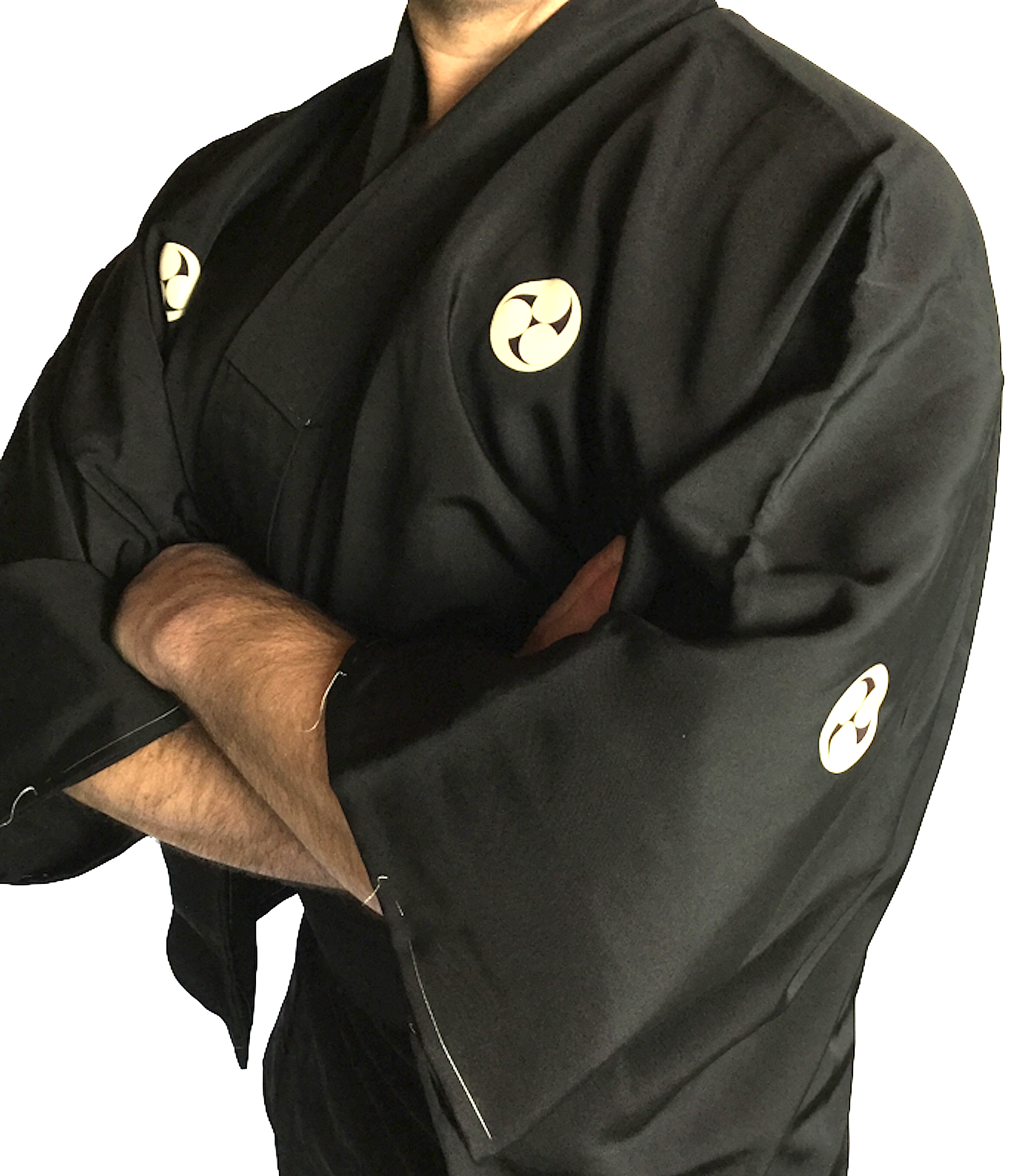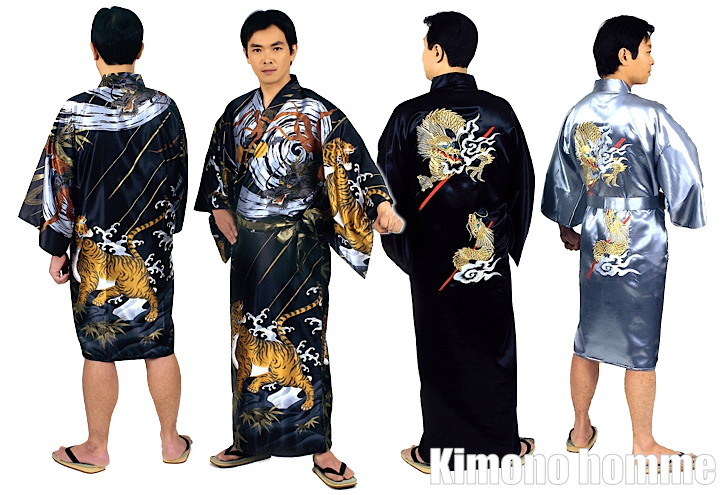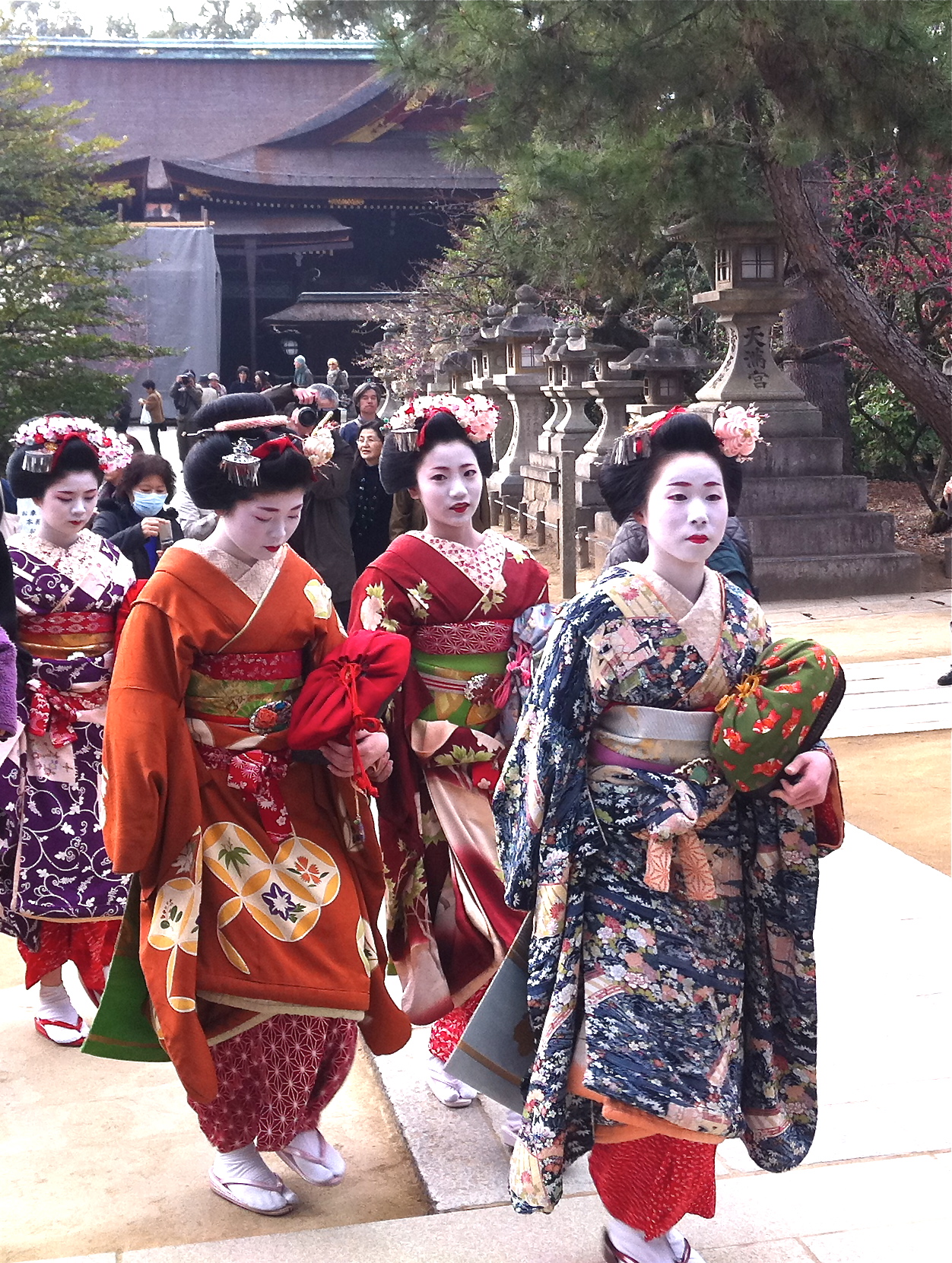- KyotoKimonoShop
- Japanese Kimono
- 0 likes
- 5543 views
- 0 comments

Japanese Kimono
 A kimono is a traditional Japanese garment that is a long, flowing robe worn by both men and women. It is typically made of silk and features intricate designs and patterns. The kimono is worn with a wide obi (belt) around the waist and is considered formal wear in Japan. It is often worn on special occasions such as weddings and tea ceremonies. The styles and designs of kimonos vary depending on the occasion and gender of the wearer. The kimono is a cultural symbol of Japan and has a long history dating back to the Heian period (794-1185). It is considered a part of traditional Japanese dress and is still worn by some people today, especially during special events.
A kimono is a traditional Japanese garment that is a long, flowing robe worn by both men and women. It is typically made of silk and features intricate designs and patterns. The kimono is worn with a wide obi (belt) around the waist and is considered formal wear in Japan. It is often worn on special occasions such as weddings and tea ceremonies. The styles and designs of kimonos vary depending on the occasion and gender of the wearer. The kimono is a cultural symbol of Japan and has a long history dating back to the Heian period (794-1185). It is considered a part of traditional Japanese dress and is still worn by some people today, especially during special events.
 What is the origin of the Japanese kimono?
What is the origin of the Japanese kimono?
The origins of the kimono date back to the Heian period in Japan (794-1185). At that time, the kimono was known as the "kosode" and was worn by the elite members of society. The kosode was a simple, unlined garment that was worn as an undergarment. Over time, the kosode evolved and became more elaborate, with longer sleeves and more intricate designs and patterns.
During the Edo period (1603-1868), the kimono became more popular among the general population and was worn as a formal and everyday garment. The kimono of this period were made of silk and featured colorful designs and patterns. The kimono also became a status symbol, with the quality and design of the kimono indicating the wearer's social class.
In modern days, the kimono is still a cultural symbol of Japan and is worn by some people on special occasions, such as weddings and tea ceremonies. However, its usage has decreased considerably and it's worn mostly on traditional events or by people who want to experience the traditional culture.
What is the shape of the kimono?
The shape of a traditional kimono is a long, flowing robe that drapes straight down from the shoulders to the ankles. It has wide, long sleeves that fall to the wrists. The kimono is worn with a wide obi (belt) around the waist, which is tied in the back and cinches the kimono to the body. The obi can be tied in different ways depending on the occasion and gender of the wearer.
-
The kimono is designed to be worn with a juban (undergarment) and an nagajuban (under-kimono) and it is quite roomy to allow for easy movement.
-
The traditional kimono is designed to be worn with split-toe socks called "tabi" and sandals called "zori" or "geta" which are worn with the kimono.
-
The kimono is considered formal wear and it's often used in ceremonies or special events, usually with a specific design and style that indicates the occasion.
What material is the Japanese kimono made of?
Traditionally, Japanese kimonos are made of silk. The silk used for kimonos is typically a high-quality, smooth and lustrous fabric, which is soft and comfortable to wear. The silk is often dyed using traditional techniques that have been passed down for generations. The dyeing process can be quite intricate and time-consuming, with some kimonos taking months to complete.
In addition to silk, kimonos can also be made of other fabrics such as cotton, hemp, and rayon. These materials are often used for more casual kimonos and are less expensive than silk kimonos.
Nowadays, kimonos made of synthetic fabrics such as polyester, nylon, and acrylic are also available. These fabrics are less expensive than silk and are more durable, but they lack the same softness and draping quality of silk.
The fabric used for kimonos can also indicate the occasion for which the kimono is worn, for example, silk kimonos are more formal than cotton kimonos.
What colors are Japanese kimonos?
Traditionally, Japanese kimonos come in a wide range of colors, with different colors and patterns having specific meanings and being worn on certain occasions.
Some popular colors for kimonos include:
- White: A symbol of purity, worn by brides and new mothers
- Black: A symbol of mourning, worn by widows and during funerals
- Red: A symbol of good luck and happiness, often worn during festivals and other celebrations
- Gold and Silver: Symbolize wealth and nobility
- Blue and Green: Symbolize nature and peace
However, the colors used on a kimono can also depend on the season and the occasion for which it is worn. For example, pastel colors are worn in the spring, while deeper and richer colors are worn in the autumn.
The kimono patterns are also an important aspect of the kimono, and they can be as varied as the colors. The patterns can be floral, geometric, abstract, or depict nature scenes. Each pattern has a meaning and is used for specific occasions.
In modern days, kimonos are available in a wide range of colors and patterns, including bright and bold colors and modern designs.
What are the differences between the Japanese men's kimono and the Japanese women's kimono?
The main differences between the Japanese men's kimono and the Japanese women's kimono are in the cut and design of the garment. Men's kimonos are typically more subdued in design and color, and are made from a heavier fabric. They also have a more straight-lined, boxy cut, and are worn with a wide, pleated hakama pants. Women's kimonos are more brightly colored and elaborately designed, and are made from lighter fabrics. They have a more flowing, curved cut, and are worn with a narrow, non-pleated skirt known as a "mo" or "mo-gyaru." Additionally, men's kimono are worn with a simple, white undergarment known as a "fundoshi," while women's kimono are worn with a more decorative, colorful undergarment known as a "hadajuban."
How to choose the Japanese kimono correctly?
When choosing a Japanese kimono, there are several factors to consider:
- Occasion: Different occasions call for different types of kimonos. Formal occasions such as weddings and tea ceremonies require more formal and traditional kimonos, while more casual occasions allow for more modern and casual styles.
- Season: The season can also affect the type of kimono you choose. Lighter, thinner fabrics are worn in the summer, while heavier, warmer fabrics are worn in the winter.
- Body type: Kimonos come in a variety of sizes and cuts, so it's important to choose one that flatters your body type.
- Age and gender: There are different styles of kimonos for men, women, and children, as well as for different age groups.
- Fabric: The fabric of the kimono can affect the overall look, as well as how comfortable it is to wear. Traditional kimonos are made from silk, but cotton, rayon, and other synthetic fabrics are also used in modern kimonos.
- Accessories: Accessories such as obi sashes, haori jackets, and tabi socks can also be considered when choosing a kimono, as they can affect the overall look and style of the ensemble.
It's important to choose the right size, style and color to look elegant, and also to respect the Japanese culture and tradition.
What are the types of Japanese kimono?
There are several types of traditional Japanese kimonos, each with their own specific style, design, and occasion for which they are worn. Some of the most common types of kimonos include:
- Uchikake: A formal kimono worn by brides during weddings. It is typically made of silk and features a long train and intricate designs and patterns.
- Furisode: A kimono worn by unmarried women. It has long sleeves that reach the ground and is typically brightly colored and decorated with elaborate designs and patterns.
- Iromuji: A solid-colored kimono that can be worn by both men and women. It is considered a formal kimono and is typically worn on special occasions such as weddings and tea ceremonies.
- Houmongi: A formal kimono worn by women. It is similar to the Iromuji but with more delicate designs and patterns.
- Tomesode: A formal kimono worn by married women. It has shorter sleeves than the Furisode and is typically decorated with designs and patterns on the lower part of the kimono only.
- Yukata: A casual summer kimono made of cotton and worn to events such as festivals and fireworks displays.
- Homongi: A formal kimono worn by married women. It's similar to the Iromuji but with more delicate designs and patterns, usually on the collar and the cuffs.
And more depending on the context and the occasion.
It's worth noting that the traditional kimonos are not common in everyday life, and it's mostly worn by older people, or those who want to experience the traditional culture.



Comments (0)